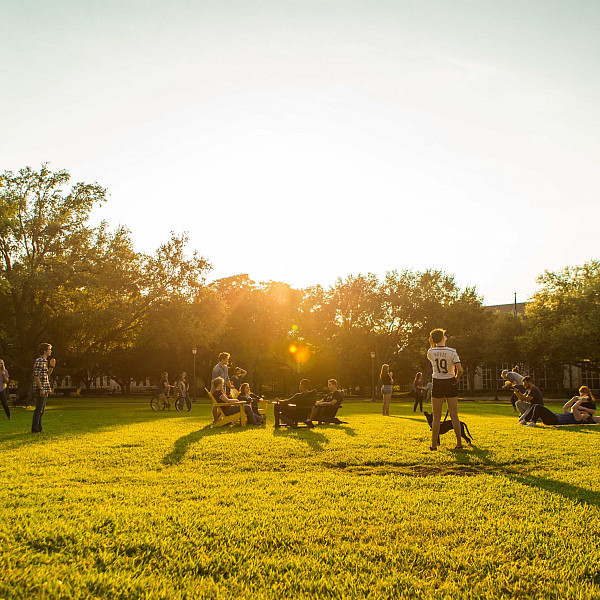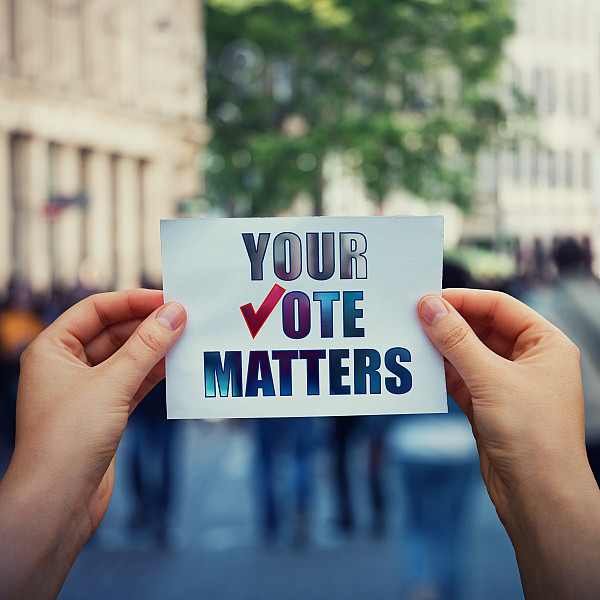News
Campus Voting Above the National Average at Southwestern University
November 02, 2021
November 02, 2021
Open gallery

Southwestern University reported that student voting on its campus increased significantly in last year’s presidential election, rising to 70.8% in 2020, from a rate of 50% in 2016. Southwestern also surpassed the national average by almost 5%.
The report comes from the Institute for Democracy & Higher Education (IDHE), creators of the National Study of Learning, Voting, and Engagement, or NSLVE. IDHE is located at Tufts University’s Tisch College of Civic Life. Southwestern’s full campus report can be viewed here.
The increase in student voting on SU’s campus was due to the work of strong student leadership from the SU Votes! Committee. SU Votes! created a voting website, developed a booklet for under-represented voting communities, responded to student voting questions, and coordinated post-election programming. They also created the “Make a Plan” contest, in which students could earn bragging rights for their favorite student groups on campus and win an “SU Votes!” face mask by planning when and how they were going to vote. Over 300 members of the campus community created a plan using their tool. The leadership from the SU Votes! committee provided a variety of student voices and more open communication and dialogue which led to a more peaceful political climate on campus.
In addition, students also amped up their digital presence, including a social media campaign created by students in the American Politics class. The campaign communicated important voter registration, access, and participation information. Plus, a polling place was brought to campus on election day.
“I’m so proud of the work Southwestern students put into this effort, from the voter education materials designed by my introductory American Politics students to the individualized registration and turnout efforts undertaken by SU Votes! Leaders,” said Assistant Professor of Political Science Emily Sydnor. “These numbers reflect a true community commitment to voting as a fundamental democratic principle, in spite of the hurdles raised by the pandemic and changing state-level rules in the lead-up to the 2020 election.”
“These numbers reflect a true community commitment to voting as a fundamental democratic principle, in spite of the hurdles raised by the pandemic and changing state-level rules in the lead-up to the 2020 election.”
Nationwide, the report details a record-breaking set of findings. On campuses across the country, students built on the momentum swing of 2018 and voted at high rates in the 2020 election, with voter turnout jumping to 66% in last year’s presidential election. The 14 percentage point increase, from 52% turnout in the 2016 election, outpaces that of all Americans, which jumped 6 percentage points from 61% to 67%, according to the U.S. Census Bureau.
“That students, often younger and first-time voters, turned out at rates commensurate with the general public is nothing short of stunning,” said IDHE Director Nancy Thomas. “We attribute this high level of participation to many factors, including student activism on issues such as racial injustice, global climate change and voter suppression, as well as increased efforts by educators to reach students and connect them to the issues and to voting resources.”
IDHE’s National Study of Learning, Voting, and Engagement (NSLVE, pronounced n-solve) is the nation’s largest study of college and university student voting. Institutions must opt-in to the study, and at this time, nearly 1,200 campuses of all types—community colleges, research universities, minority-serving and women’s colleges, state universities, and private institutions—participate. The dataset reflects all 50 states and the District of Columbia and includes 49 of the nation’s 50 flagship schools. IDHE uses de-identified student records to ensure student privacy. The 2020 dataset is robust with 8,880,700 voting-eligible students representing 1,051 colleges and universities.
















